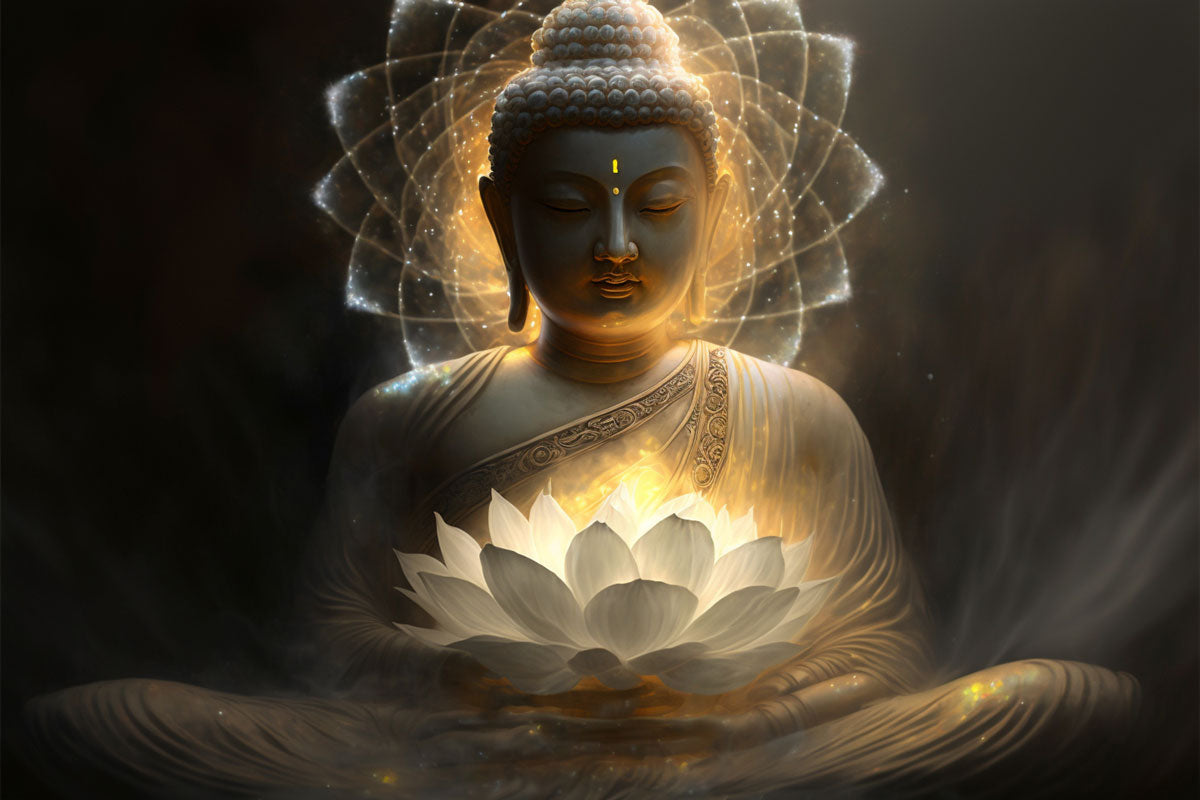Buddha’s Influence

Buddha’s Influence
Mindfulness & Meditation
Author/Editor: Jennifer J. Lacelle
Date : August 19, 2021
The term mindfulness is becoming a huge buzz-word in the holistic health world. Anywhere from yoga, therapists or martial arts you’re bound to hear the word at least once. But what is mindfulness? To put it simply, it is the act of placing purposeful attention on things in our lives so we live in the present moment.
We do this without judging what happens, being open minded and kind to ourselves and others around us. We feel what is happening in our body, physical and emotional, as well as thoughts playing out in our minds.
History
Fun fact: the word Buddha means enlightened. The original Buddha was never considered a God or Deity, he was simply thought of as extraordinary. Who is he though? Siddhartha Guatama was actually a Nepal Prince back in 5th Century BCE.
While he personally didn’t experience the hardships of poverty growing up, he was so moved by the plight of his fellow man that he changed his lifestyle. He experienced poverty for a time, but changed his ways to a middle class (not extravagant or lacking).
He supposedly spent six years searching for spiritual enlightenment before obtaining it through meditation under a Bodhi tree. From there, he dedicated his life to showing others the path. Siddhartha’s followers began developing the movement for Buddhism after his death (483 BCE). It became the official religion of India by King Ashoka in the 3rd Century BCE and many monasteries were erected.
Followers established different interpretations of the teachings over time and there are three main branches now. As it goes, everything changes over time and after the Huns invaded (eventually pushed out), and Islam entered the country, Buddhism took a back seat. Now, there are whole other subsects to Buddhism and multiple teachings within teachings.
For example, there’s the eight-fold path, dharma, and the four noble truths. It also discusses human suffering, impermanence and no-self. All of these are meant to help people progress to the final stage: enlightenment.
History in the West
People in western society really began taking notice of Buddhism in the mid-19th century when immigrants from southeastern Asian countries arrived. Think China, Japan, India and Nepal as the predominant citizens entering the US. In 1959, many Tibetan Buddhists moved to the US after China invaded and took over their lands.
The teachings began picking up speed in the 1960s-70s as the younger generations began seeking different religious practices. The Little Pocket Book of Mindfulness by Anna Black refers to Dr. Jon Kabat-Zinn, who established an eight-week program in 1979. It was designed to help people with chronic conditions through mindfulness-based activities (MBSR: Mindfulness-Based Stress Reduction).
Through the activities, people could discover different ways of handling their suffering. The study showed that people who completed the course obtained stronger immune systems, lowered blood pressure, and had a shift in their brain’s management of emotions. Black further notes the works of several people who developed MBCT: Mindfulness-Based Cognitive Therapy in 2001.
This approach was for those suffering from depression, but has since adapted to include addictions, eating disorders and anxiety. It’s even recommended by the National Institute for Health and Clinical Excellence (UK).
How Does Mindfulness
Help
Black also notes that bodily functions (growth, digestion, reproduction) decrease in activity when the stress response cycle is turned on.
Fun fact: extreme amounts of cortisol actually “kills” the area of the brain that creates new brain cells… When this high level of hormone occurs, toxins build up within the body and causes devastating effects on the mental, emotional and physical health of these individuals, according to Vital Living – Calm by Becky Dickinson.
In today’s world, we’re constantly bombarded by stress, which means the amygdala is constantly activated and prepared to fight or flee. The brain scans the situation and helps base whether or not to activate on our memories, or stories we’ve told ourself, to determine whether or not we’re safe. In other words, if we’ve had a bad experience walking the street alone at night we’re more likely to experience anxiety, fear and increased heartrate (induced by the amygdala).
However, we can help all of these aspects in our body and mind by practicing mindfulness. How, you might ask? It actually “desensitizes” the triggers for stress and allows the body to return to a state of balance.
Black refers to a study conducted by Richard Davidson who examined participants of an MSBR program and realized there was a noticeable change in the brain activity which allowed them to better cope with hard emotions. Former NHL player turned sexual abuse advocate, Theo Fleury (see IINTA Magazine’s September 2021 edition for exclusive), says that sitting in one’s “shit” is helpful in the healing process, even if we can’t recognize what emotion is tumbling through our bodies and minds in the moment. “Formal practices offer an opportunity to practice being with difficult emotions in a place of relative safety,” writes Black in her book.
She goes on to explain that the more aware of our thoughts we become, the more people realize their unhappiness is created by our stories. Davidson even states emotional health plays into at least half of medical problems people face. I suppose the saying, “laughter is the best medicine,” has merit after all.
Getting Started
Since it’s been established that mindfulness changes the brain and body, why not start with the vagus nerve? This is a collection of nerves that connects various parts of the body to the mind, kind of like motion sensors for security.It helps regulate heart rate, breathing, blood pressure, digestion and muscle relaxation while releasing the positive chemicals into the body (prolactin, oxytocin and vasopressin).
You can stimulate this 12-pair bundle of nerves by taking deep and slow breaths, and engage the diaphragm. How does this help? It’s closely tied to the respiratory system, which is one of the reasons why breath work is prevalent in yoga and meditation. Try this simple meditative guide to begin: Step One: have an attitude of curiosity, trust, patience, non-judgemental, non-striving, accepting and letting go.
It’s a long list but essentially it’s to be in the moment and allow what happens to happen. Be gentle with yourself when you meditate. Step Two: get comfortable, sit in a comfortable position (whether in a chair, floor or standing) and wear loose-fitting clothes.
You should be alert and upright (don’t slouch), but relaxed. Step Three: take a few slow, deep breaths and allow it to become steady. Usually in through the nose and out through the mouth.
Step Four: if you have a mantra, you can repeat it internally or verbally as a whisper. If a thought comes in, simply let it come and go like a gentle breeze.
It’s natural for thoughts to pass through your mind as you do this, try not to chastise yourself for it. The more meditation you do, the more you will realize your body and surroundings, which is being mindfulness. Being mindful is sitting in the present and recognizing our thoughts and feelings. Once you feel ready, you can begin to incorporate your mindfulness practices to that above routine.
In this case, you’ll pay much more attention to your body and how it feels. Is there tension? If so, where is it? Then relax. When thoughts roll through, you can begin identifying them. It could look like: I have a presentation at work — anxiety. I’m driving out of town in the morning — planning.
Keep focusing on your breathing before slowly paying attention to your body again and finally awakening from the practice. You can integrate mindfulness into any portion of your day. Just tune into what’s happening around you and you’re off to a great start. Destress your body and take a few breaths. “In the mind, the mind is not to be found; the nature of the mind is clear light,” Buddha.
